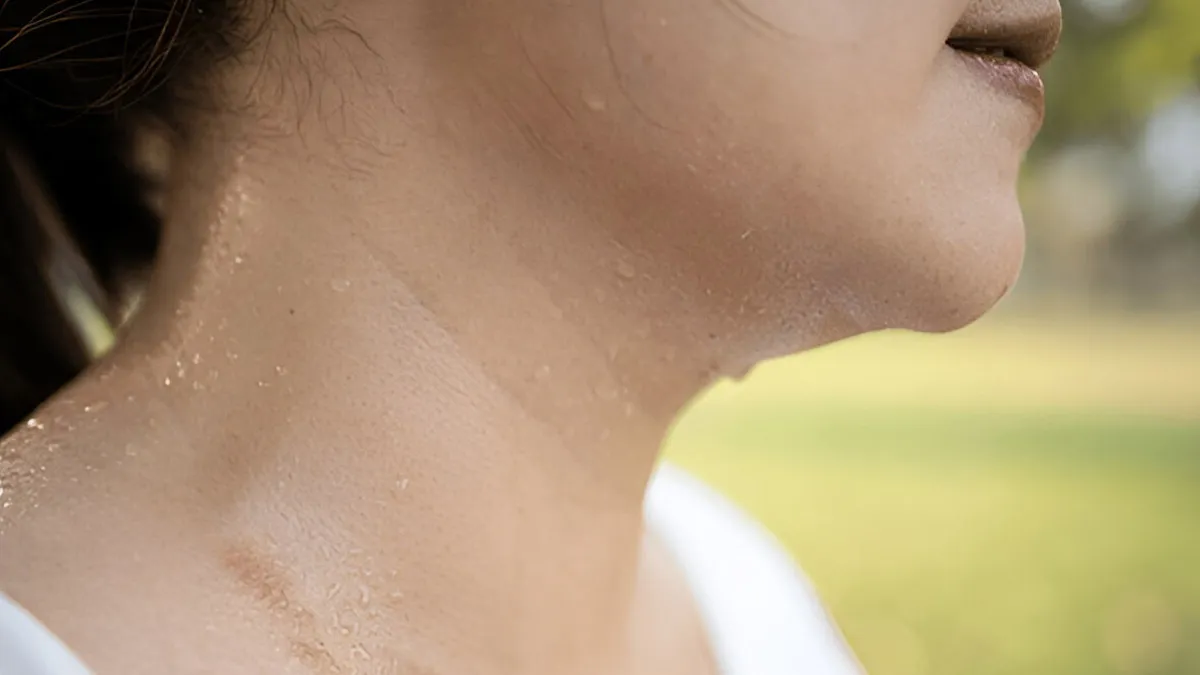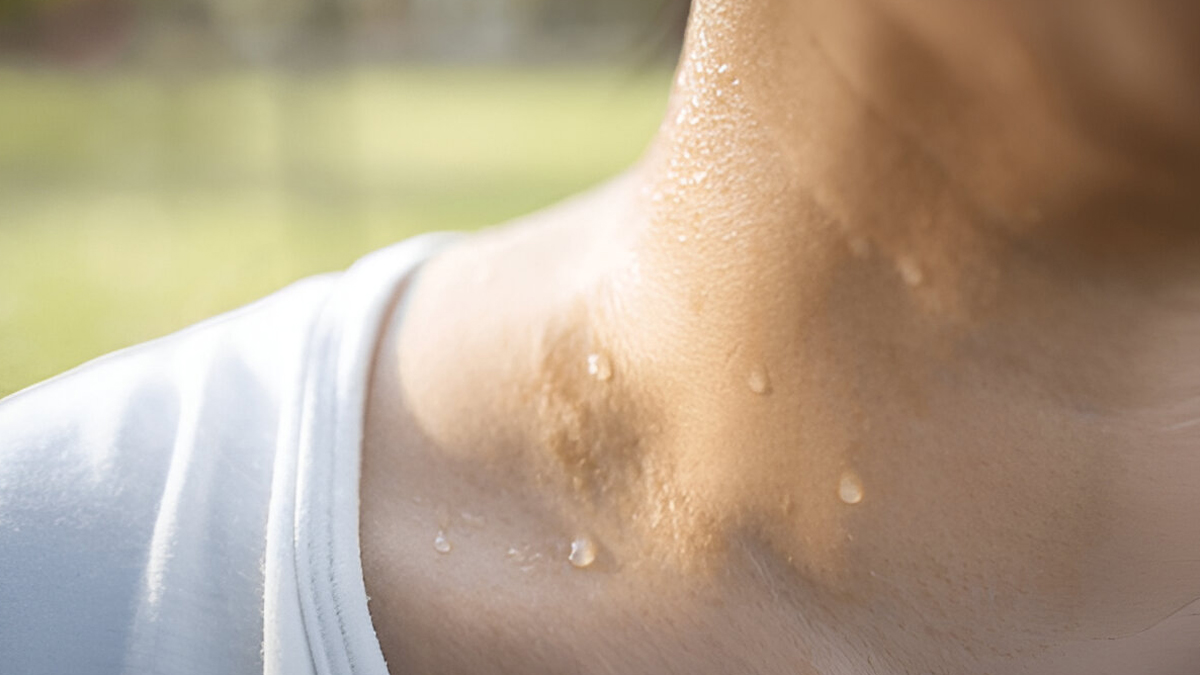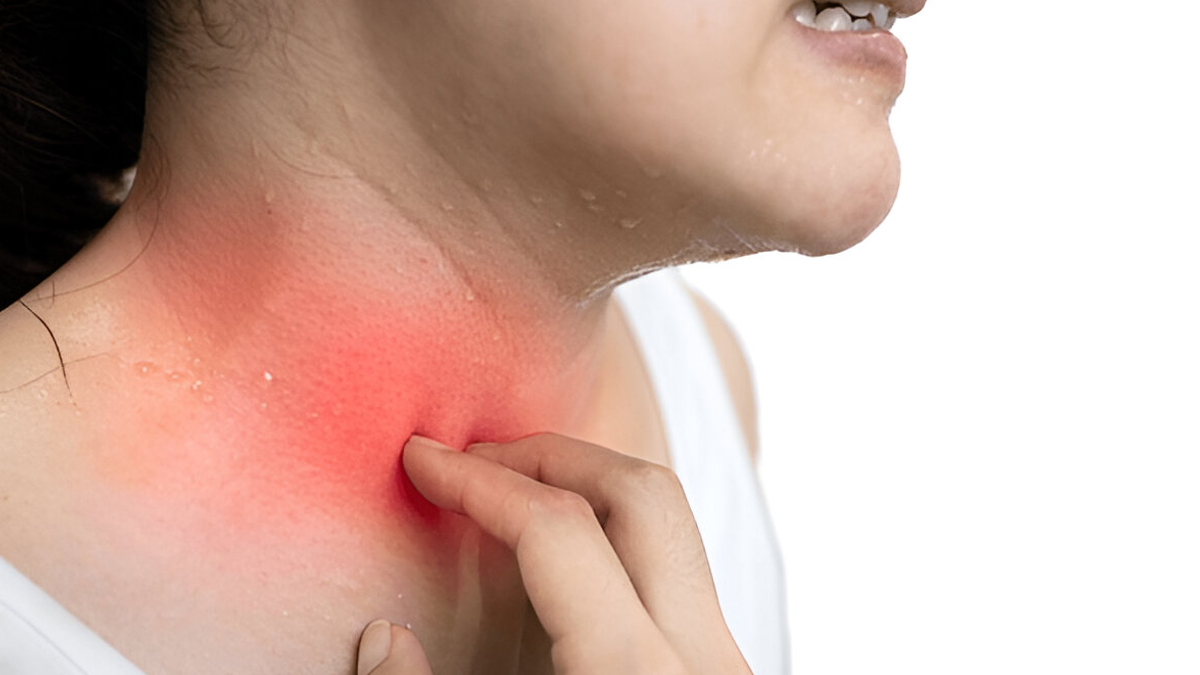
Have you ever stepped out on a muggy day and felt like your neck had turned into a glue trap? That clingy, sticky, uncomfortable feeling that creeps in during hot, humid months, especially around the neck, behind the ears, and under your chin, isn’t just annoying. It’s what many call the unofficial 'Sticky neck syndrome.' Although it is not a clinical condition, it's a real, lived phenomenon, especially during monsoons or in tropical environments where the humidity is at its peak.
Table of Content:-
The Science Behind the Stickiness

Humidity affects the way your skin behaves. In simple terms, when the air is loaded with moisture, your sweat doesn't evaporate as efficiently. Sweat sits on the skin’s surface, mingling with natural oils, dead skin cells, dust, and pollutants. This ends up collecting around creased or folded areas, including your neck.
Add friction from collars, long hair, jewellery, backpacks, or even just turning your head, and your neck becomes a prime spot for irritation. This sweaty stew can lead to a range of problems:
- Clogged pores and breakouts
- Chafing or rashes
- Fungal infections like tinea (ringworm)
- Darkening or thickening of the skin in certain cases, particularly in individuals who are already susceptible to conditions, such as Acanthosis Nigricans
Essentially, your neck becomes a breeding ground for both discomfort and skin troubles.
A comprehensive review of over 50 studies shows how low humidity and temperature impair skin barrier function, elevating Tansepidermal Water Loss (TEWL), inflammation, and sensitivity to mechanical stress.
Who’s More Prone to It?
If you have oily or acne-prone skin, a job that keeps you outdoors, or if you live in cities with heavy pollution and high humidity, chances are, your neck takes a beating in summer and monsoon. People with larger body frames or deeper skin folds may also experience more friction and sweating in the neck area.
And don't forget about long-haired individuals, the hair catches heat and sweat, so the back of the neck feels particularly sticky.
Signs Your Skin Is Crying for Help
Here’s how your neck might be trying to tell you it's had enough:

- Persistent itchiness or a tacky feeling that won't go away
- Small bumps or acne along the neckline
- Redness or raw patches, particularly under chains or shirt collars
- Dark, rough, or thickened skin folds
- Ignoring these can sometimes lead to bacterial or fungal infections, so if things don’t improve with basic care, it’s worth consulting a dermatologist.
Soothe, Don’t Suffocate: Tips to Manage Sticky Neck Syndrome
Choose Breathable Fabrics

Say goodbye to heavy synthetics. Cotton or linen blouses provide ventilation and absorb sweat, removing that sticky sensation. Hence, try open-neck shirts and avoid tight collars.
Cleanse Smartly
Wash your neck with a gentle, pH-balanced cleanser, ideally twice a day. Steer clear of abrasive scrubs that irritate sensitive skin. If you are likely to breakout, use a cleanser containing salicylic acid.
Stay Dry, But Not Dehydrated
Use a soft towel to pat (not rub) your neck dry when you sweat. You can dust on a non-comedogenic powder that is also antifungal, such as clotrimazole or zinc oxide, to keep things dry and cut down on friction. But don’t overdo it, too much powder can clog pores.
Tame the Tresses
Keep your hair tied up loosely when it’s particularly hot or humid. If you use styling products, make sure they’re not dripping down your neck and causing clogged pores.
Hydrate and Protect
Use a lightweight, water-based moisturiser to keep the skin barrier intact. And yes, your neck needs sunscreen too, preferably one that’s non-greasy and won’t melt into your shirt.
Nighttime Reset
Consider applying a mild anti-inflammatory cream or calamine lotion if your neck feels irritated at the end of the day. A few drops of tea tree oil mixed with aloe vera gel can also soothe minor itching or bumps.
When to See a Doctor
If the stickiness turns into recurring redness, burning, or stubborn breakouts, or if the skin around your neck becomes unusually dark and thick, it may not be just humidity. Conditions like Acanthosis Nigricans, fungal infections, or dermatitis need professional attention.
[Disclaimer: This article contains information for informational purposes only. Hence, we advise you to consult your professional if you are dealing with any health issue to avoid complications.]
Also watch this video
How we keep this article up to date:
We work with experts and keep a close eye on the latest in health and wellness. Whenever there is a new research or helpful information, we update our articles with accurate and useful advice.
Current Version